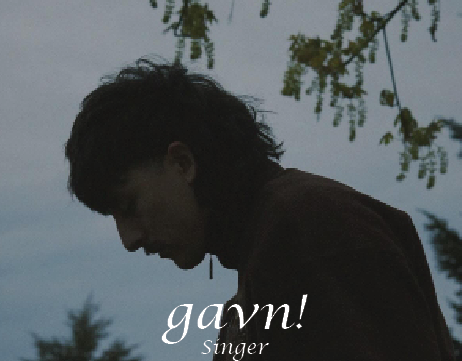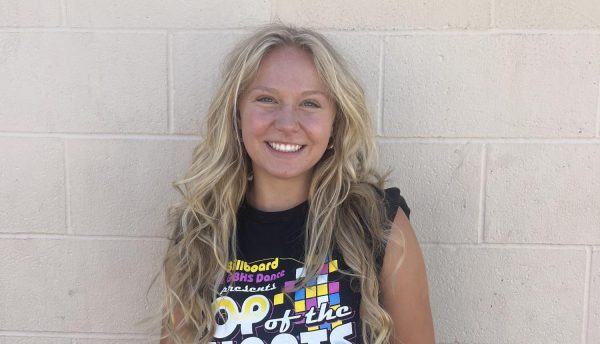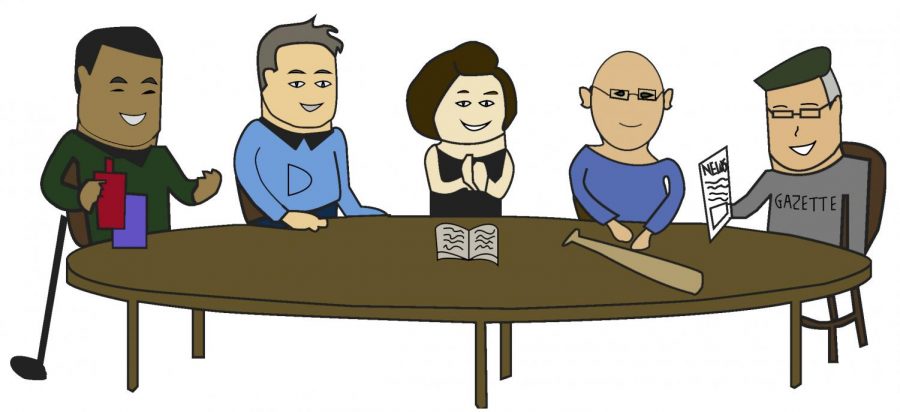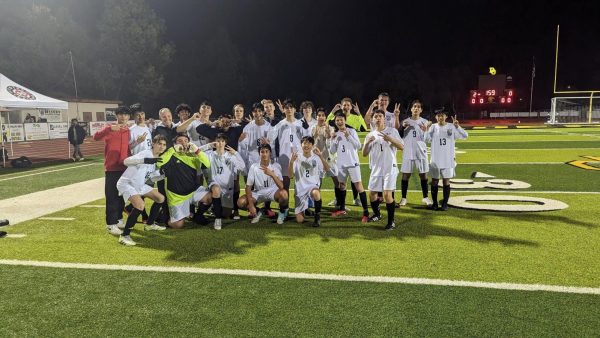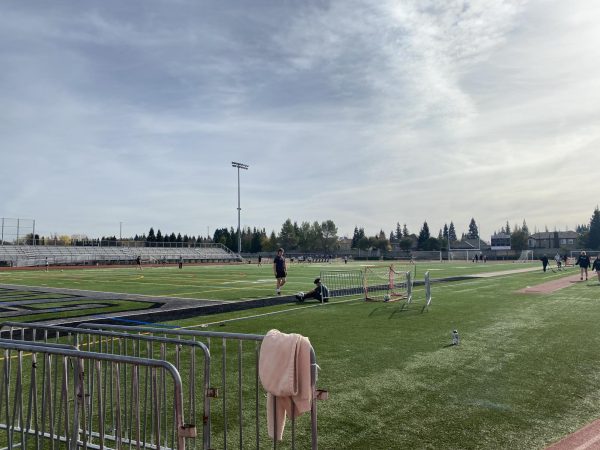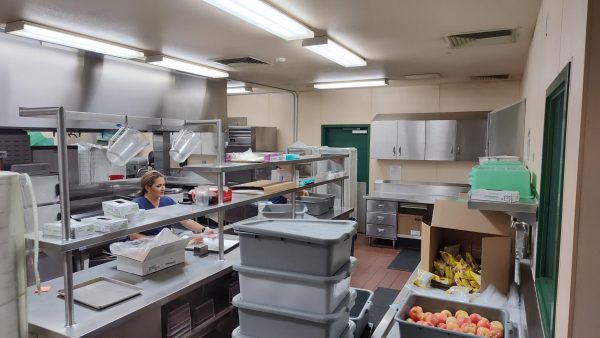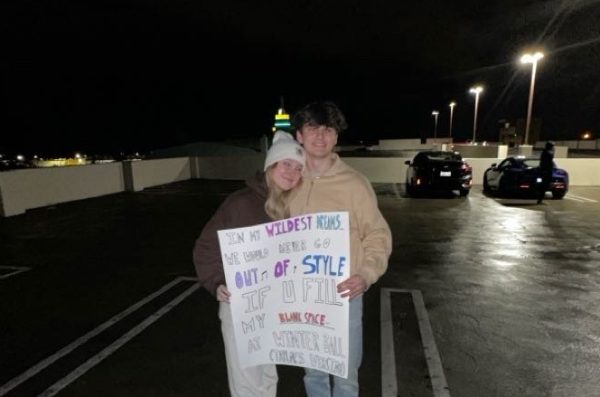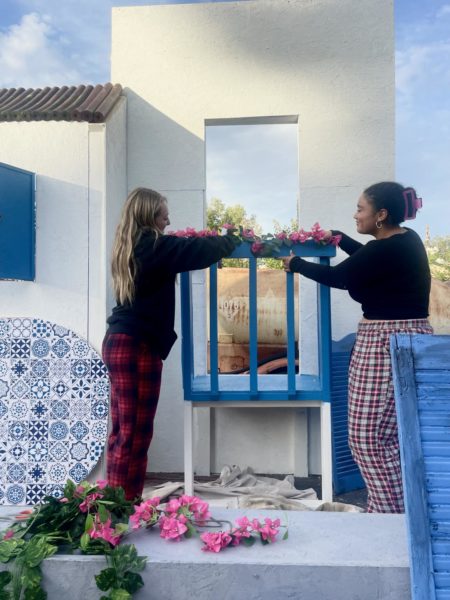Do teachers have cliques too?
Teachers comment on potential cliques within departments
See More Features Articles
Gazette/GBT.org iIllustration/ ASHLEY YUNG
More of a social club, the Bitter Boys (and Girl) is a group of teachers who keep their lunch get-togethers exclusive to themselves, NO interruptions. Illustrated above is a representation of the Bitter Boys with their iconic symbols, like a golf club.
It is said by many students and parents within the community that Granite Bay is home to many cliques.
However, many wonder if cliques are found only in high school students, or if they may appear amongst teachers as well.
As different departments within the school often gravitate towards one another, teachers often find that they tend to stick close to those within their own departments.
AP European teacher Mike Valentine does believe that cliques among students or teachers is specifically relative to Granite Bay.
“You would likely see the same at Woodcreek, Rocklin, wherever you go,” Valentine said.
Despite cliques however, Valentine believes that Granite Bay is a very welcoming environment and is ideal for teachers due to its positivity.
I would not call it cliques. I’d call them groups of friends, or simply colleagues.
— Gerardo Solano
Spanish teacher Gerardo Solano also feels cliques are common, but that Granite Bay is no different from other schools in regards to forming specific groups.
“This is my fourth school here in California,” Solano said, “I’d say that the environment here is about the same as everywhere else.”
“Teachers have very busy jobs,” Solano said, “There is not much time to socialize.”
“During lunch time when we normally get together, and it’s usually as departments,” Solano said.
Solano believes departments tend to migrate towards each other, as it’s just the nature of the job.
“I would not call it cliques,” Solano said, “I’d call them groups of friends, or simply colleagues.”
“Departments play a role because those are the teachers that you see the most,” Solano said, “We tend to have more in common.”
“I believe that students do form cliques,” math teacher Lisa Vaughn said.
“However, in a classroom where it’s common to have multiple class levels in one class, cliques aren’t as apparent,” Vaughan said.
“Teachers definitely form cliques as well,” Vaughn said, “It’s natural to gravitate towards people that share similar interests with you.”
Teachers definitely form cliques as well. It’s natural to gravitate towards people that share similar interests with you.
— Lisa Vaughn
“It’s easy for me to say my “clique” is with the math department,” Vaughn said, We (the math department) go through our days sharing similar experiences.”
“It’s reassuring and comforting to have the ability to share these experiences with each other,” Vaughan said.
Vaughan believes the relationships created amongst teachers help create a positive environment for everyone.
According to staff members here at GBHS, cliques are not a something that is solely associated with Granite Bay.
Teachers believe the schools overall environment is positive and nurturing, despite any cliques involved.
“I feel very supported and valued as a teacher at GBHS,” Vaughn said.
“From interactions with my boss, to my coworkers, and even my students,” Vaughn said, “I believe I teach at a school where teachers have a voice and are respected.”

Michela is a senior, and this is her first year on the Gazette/GBT.org staff.




